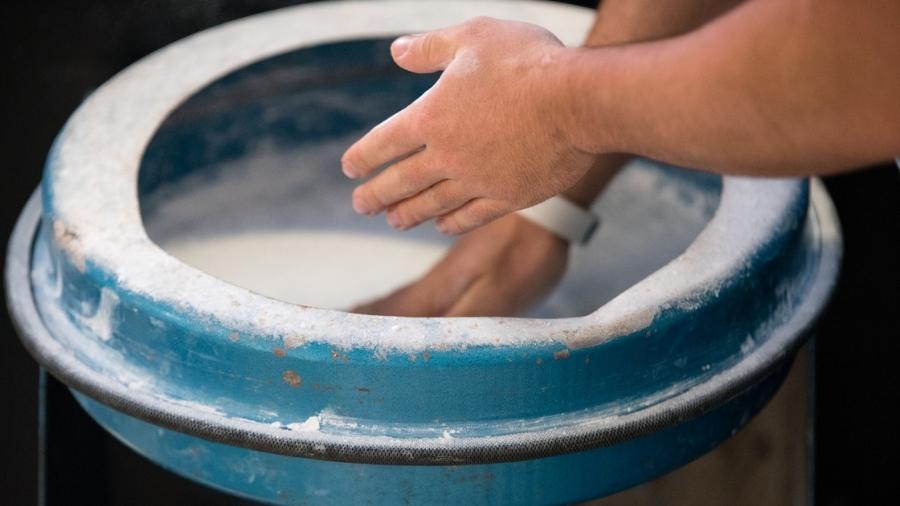Originally written by Brandon Morrison
You know that your lifting has taken a serious turn for the better when you need to start thinking about callus care. Webster’s dictionary defines a callus as “an area of skin that is hard or thick, especially on the palm of the hand or sole of the foot, as from continual friction or pressure”.
For lifters, the friction is usually from the barbell or weight handle, and the pull-up bar. For example, deadlifting will cause calluses close to the base of the fingers, while pull-ups can cause a massive amount of calluses on your fingers and palm–especially when kipping or butterfly kip is used.
It is good to develop calluses because they toughen up the skin to protect it from blisters and tears. Those who wear gloves while lifting will never develop this natural safety feature.
It’s great to be hardcore and badass with your huge calluses until it rips. Then its blood interrupted workout, and possible infection until you get it taken care of. To minimize the chance of a callus rip, there are a couple of precautions that need to be taken.
Use Chalk
Chalk will save your hands from the hell that is a ripped callus and “if you go to a gym that doesn’t let you use chalk, [its] time to change gyms” (CFHQ). Chalk will soak up sweat and grease to help reduce the chance of developing blisters from the bar slipping around in your grip.
It is important to remember to wash the chalk off after the workout is completed or else the chalk will stay in the cracks in your hands, causing further cracking and splitting.

Fix Your Grip
Your grip can have a lot to do with the number of calluses you accumulate. Most people tend to grip the bar in the middle of their palms and squeeze. Naturally, the only direction that the bar will travel is toward your fingers.
This causes the skin fold to increase between the bar and your fingers, which is the main culprit of calluses.
How To Treat Calluses
If calluses start appearing, they need to be filed down regularly. Without filing, they will just get bigger and more raised up from your palm, thereby more likely to rip off it caught. Keeping them filed down will level them with the rest of your palm, reducing the chances of abrasion. There are two easy ways to file them down: using a pumice stone or a ped-egg.
I like to use the Ped egg because it does a better job of filing away the dead skin than a pumice stone does–though it may be a bit more expensive depending on what type of pumice stone you buy.
Shaving or filing the callus works best when you get out of the shower or soaking your hand in water first to soften them up, if necessary. Afterward, put some moisturizer on your hands (guys, borrow your girlfriend’s lotion if you don’t want to buy any yourself).
In the case of an already-ripped callus, there isn’t much you can do until it heals. Try to cut off any flaps of skin with nail clippers or your teeth. You can always tell if someone is a weightlifter if you see them eating the palm of their hand.
I got in trouble on a cruise when I was picking off a callus at the dinner table with a knife. Don’t do that. You can always try to tape the hands, but most of the time the tape will just rip off anyway.
So, Why Not Just Wear Gloves?
Well apart from the reason that I am a glove hater and they are the opposite of macho, there is actually a good reason: gloves interfere with your grip. They make whatever you are holding much harder to grip, and they remove contact with the bar.
This means that you can’t feel when the bar starts to move in your hand which is an early sign of impending grip failure. But hey, if you insist on wearing gloves while you lift, at least make sure they match your purse. Gloves are no substitute for human skin and a little bit of chalk! So look after your calluses, and they will look after you.
